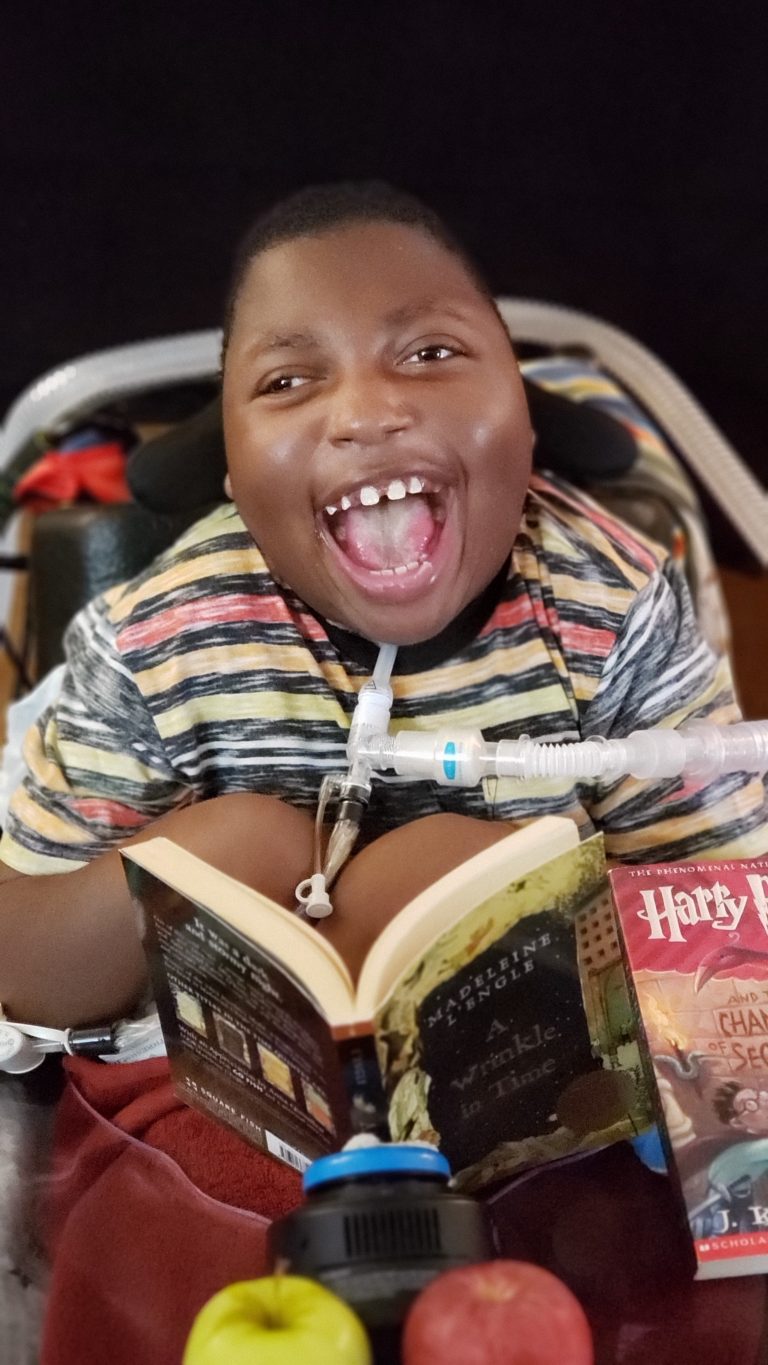For kids like 11-year-old Robert Bursey, any trip outside the home is risky and time consuming. Going to a doctor’s appointment can be a real challenge.
“Robert has cerebral palsy and depends on a tracheostomy tube and a ventilator to breathe,” explained his mother, Edie Aardsma. “It’s a great deal of work just to get him ready to leave the house. And he almost always gets sick after an appointment because he’s exposed to different germs. He needs a lot of care, but he’s always smiling and happy.”
Leaving home is especially concerning now because of the COVID-19 pandemic. But because of generous donations to Advocate Children’s Hospital, 100 families with critically ill children will be receiving a remote exam device called a TytoCare kit so they don’t have to leave home to see their doctor.
“We got it at a time when we really needed it,” recalled Edie, who used a TytoCare kit during flu season a couple years ago. “It was a lifesaver.”
The devices are designed to be used by a parent with the guidance of a physician, who can examine a patient’s ears, heart, throat, lungs and more – all while the patient remains in their home.
“Once we got it set up, it was super easy to use. It was also very interesting because I was able to see inside Robert’s ears too, which you normally don’t get in a clinical setting,” said Edie.
Perhaps most importantly, the TytoCare kit made the visit more comfortable for Robert.
“It can be scary for kids to go to the doctor, especially now when everyone is wearing masks. This way, I was the one doing the exam, and he got to stay in his chair at home where he’s happiest.”
The changing face of health care
TytoCare kits are just one part of the telehealth program at Advocate Children’s Hospital.
“Our telehealth program has been in place for about three years, and we’ve been steadily trying to build it,” said Dr. Kathy Webster, Medical Director of Pediatric Telemedicine at Advocate Children’s Hospital.
The program’s goal for the entire year was to reach 2,000 telehealth visits. Then the pandemic hit.
“In March, we had 500 visits. In April, we had 5,000,” she said.
The number of telehealth visits peaked in May at 6,000 but has started to decline because most clinics have reopened.
“The service line with the most virtual visits has been physical medicine and rehabilitation. They’ve done a great job of integrating telehealth into their practice,” shared Dr. Webster. “It’s been interesting to watch which programs and types of visits are working well. For example, in Sleep Medicine, they haven’t had to cancel a single patient appointment during the pandemic.”
In fact, for patients with sleep issues, telehealth has been more effective than in-person visits.
“That’s because clinicians are able to observe patients in their own homes. Typically, they’re trying to use questionnaires to assess a child’s sleep environment, but with telehealth, they can actually see their bedrooms.”
Telehealth visits can also seem more personal.
“When we have in-person visits, physicians and nurses are wearing personal protective equipment and patients have masks. With telehealth, we’re able to connect more with patients because we can see their facial expressions. It can be more impactful,” said Dr. Webster.
You can help families like Robert’s
Philanthropy plays a key role in keeping at-risk children safer during these unprecedented times. Charitable gifts are also used to purchase iPads, which allows families to communicate with each other when in-person visits are not possible. To support these efforts, please contact Amy Valenzio at amy.valenzio@aah.org or make a gift online.
